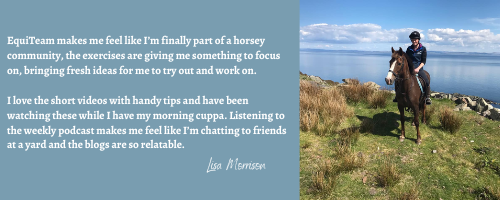A lot of thought goes into preparing the horse to be clipped, after all it’s not a five-minute job. Just as much preparation is also required to ensure horse clippers and trimmers and horse clipping accessories are kept in good working order.
Prior to the start of the horse clipping season, all horse clipping equipment, whether its horse clippers, trimmers, batteries, leads, spare clipper blades and accessories need to be checked before use. It is very frustrating to find clipper blades are blunt from the previous season, or a tension set is missing from the clippers.
Check your clippers
Avoid the frustrations and stress by checking all horse clipping equipment well before you need them. Clipper companies are always exceptionally busy during the autumn clipping season, and the wait time can be several weeks if a clipper service or repair is required so look those clippers out and put this on your to-do list.
When checking the horse clipper, make sure the tension set is in place, air filters are clean and there is a spare set of sharpened blades to hand.
It’s also best to turn the clipper on to ensure it’s running and in working order. Quite often when a horse clipper hasn’t been used for a few months, there is a chance that dampness will cause operating problems.
If the horse clipper doesn’t turn on, it’s worth checking the overload button/switch if the clipper has one. Sometimes it pops out if the clipper is working at a high temperature or if there is sign of the motor failing. By pushing it back in with a biro or matchstick, this will immediately start the machine again if it is in a functioning condition. If it continues to pop out, then seek a clipper specialist for further advice.

Blades
Make sure blades are clean, and well oiled and packed in plastic or similar so that they are kept clean and dry. For storage or in transit, it may be worth investing in a storage tin or plastic box for safe keeping.
Tension set
Check the tension set, if there is one on the clipper, the tension set comprises, bolt, nut and spring. This does need replacing on a reasonably regular basis, as the spring will distort over time and affect the tensioning. Sometimes this can be the reason the blades are not working as efficiently even though they are being tensioned the same way as usual.
Cable
Check the cable for any wear and tear and look at the connection going into the horse clipper as this is the usual place for breaking other than if the horse treads on the cable. We also recommend fitting a circuit breaker for mains operated horse clippers.

Caring for your clippers
Keep all horse clippers and accessories in a dry warm place, and not in a damp outbuilding or tack room. The dampness affects a horse clipper significantly, as dampness works its way into the inner workings and can cause the capacitor inside the motor to deteriorate rapidly. Quite often when a horse clipper suddenly goes “pop”, the capacitor suddenly failing will cause this noise.
Ensure that horse clippers and trimmers are cleaned and packed away carefully after each use including removing blades and brushing off and re-oiling in readiness for the next time.
If you do lend your horse clipper to a friend, ensure they know exactly how to tension the machine and how to use it. Most problems with operating the horse clipper come from incorrect use or tensioning and this will over time affect the performance and operation of the horse clipper.
Don’t forget to check your oil supplies and order any if you are low. If you have someone else to clip your horse then get booked in well in advance as they tend to be busiest at this time of year.
Thank you Clippersharp. You can find out more about Clippersharp HERE.
If you’d like more useful tips about clipping the EquiTeam members video library includes everything you need to know, from which clippers to choose, to clipping straight lines and mane blending.
Join EquiTeam for just £15 per month to access our extensive member content






